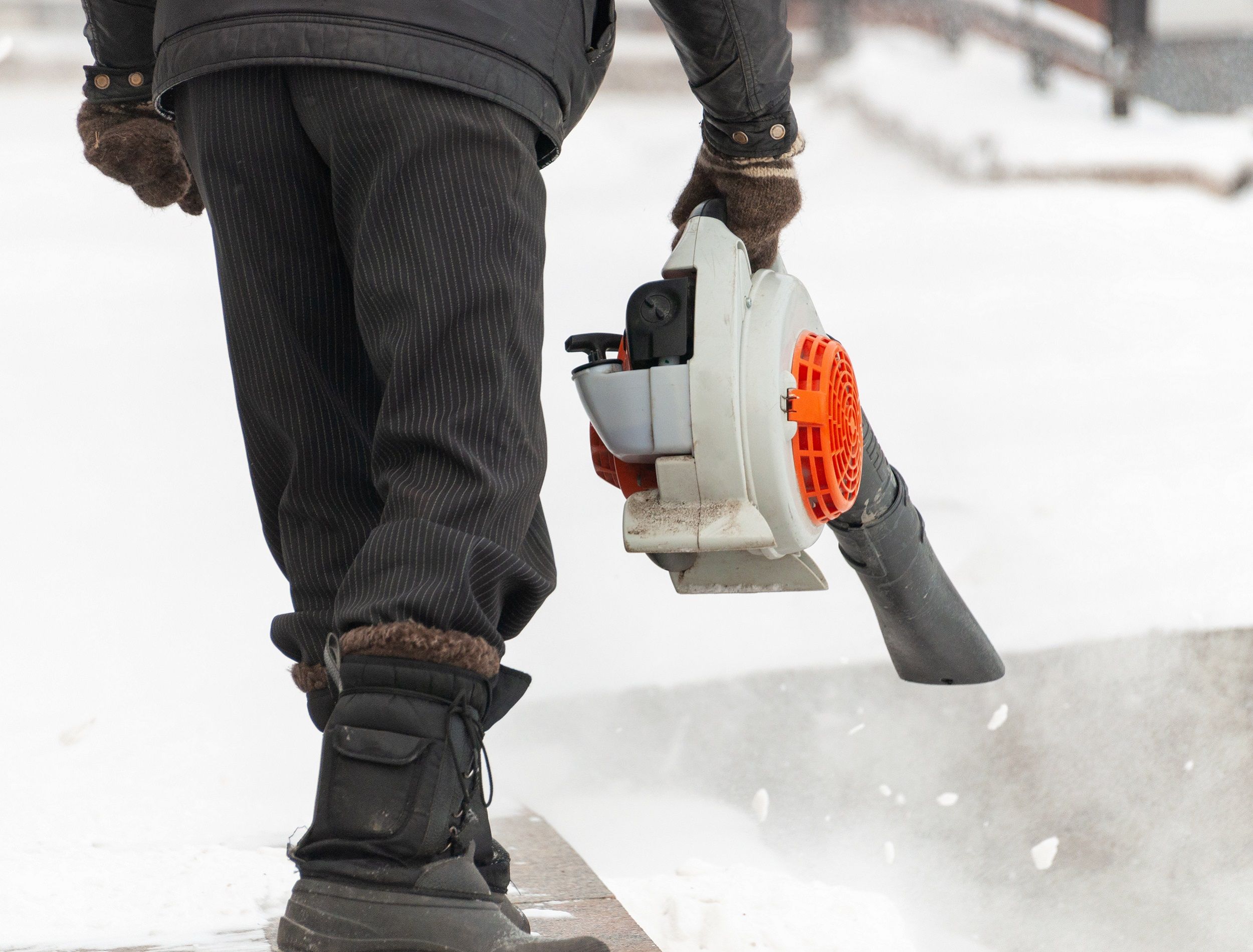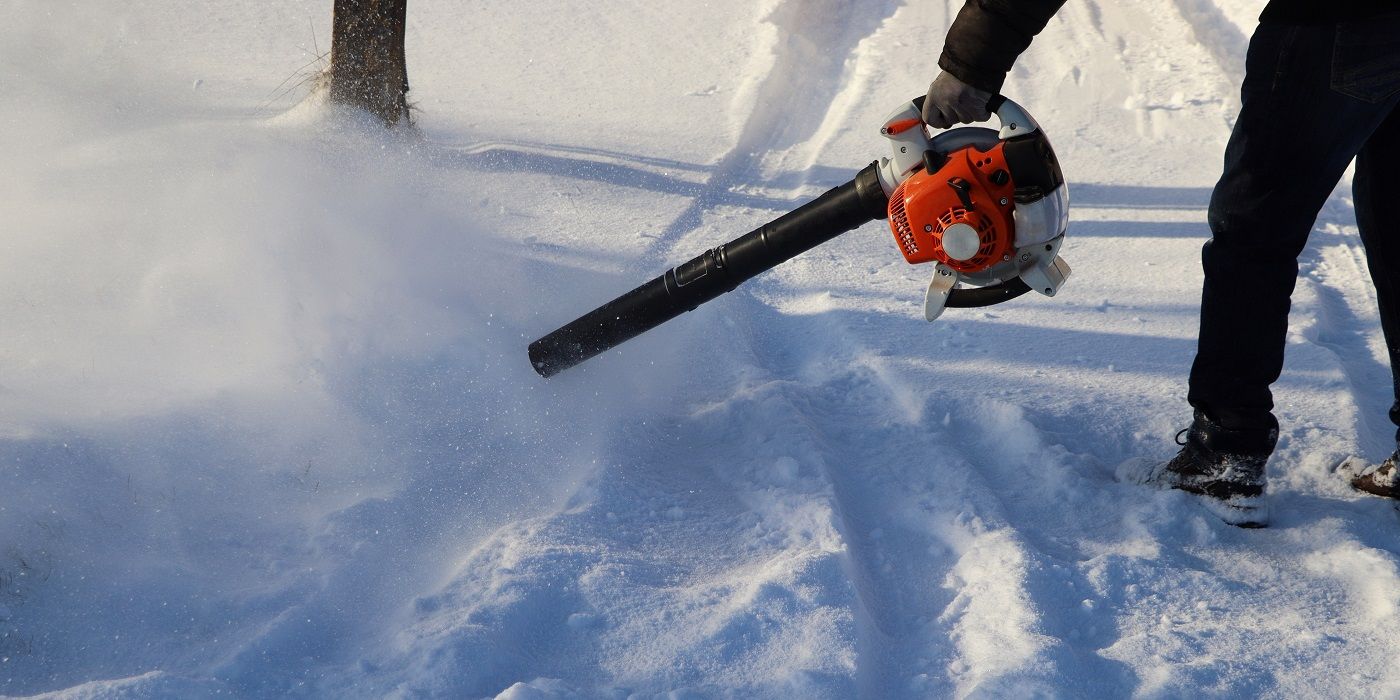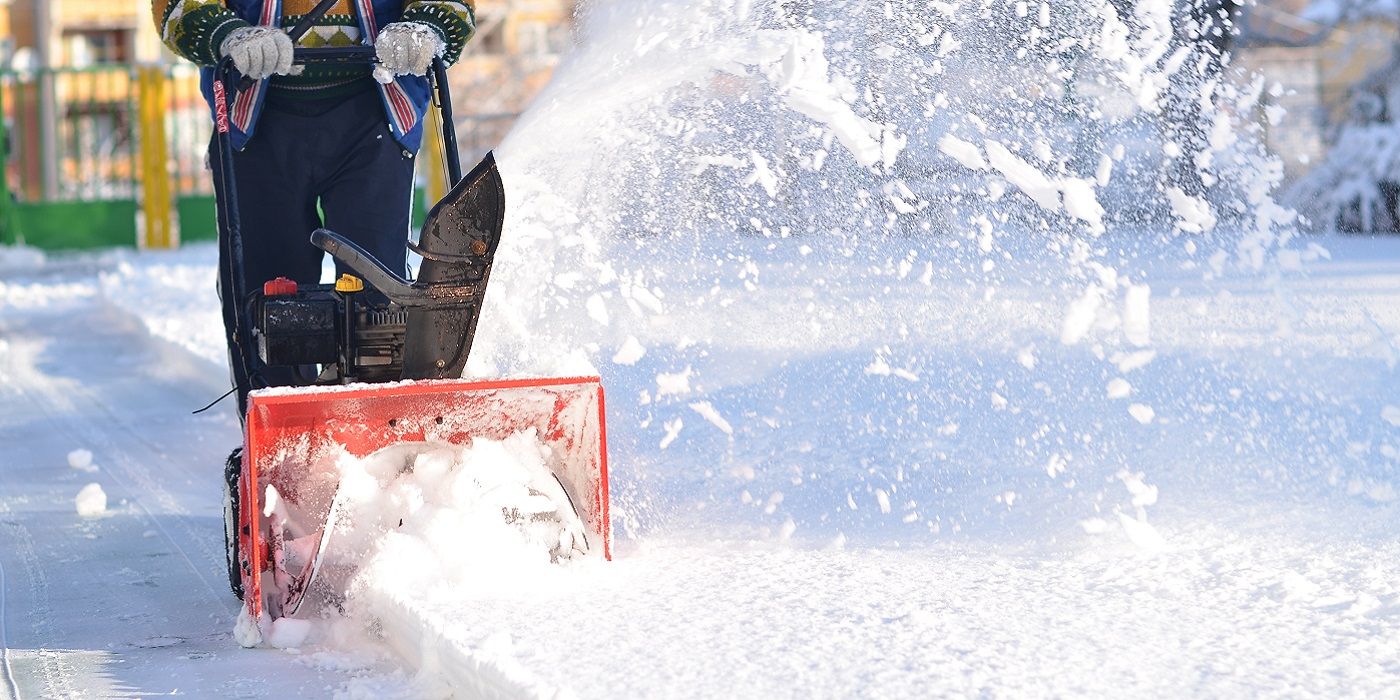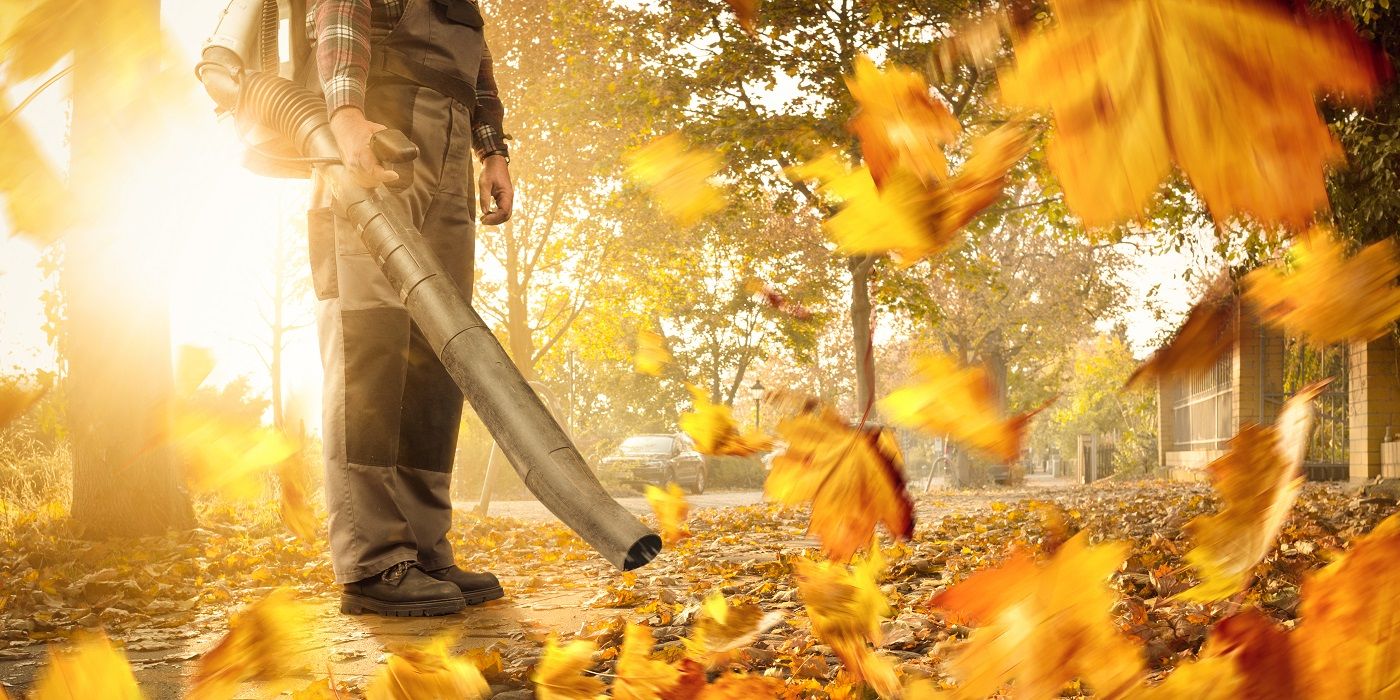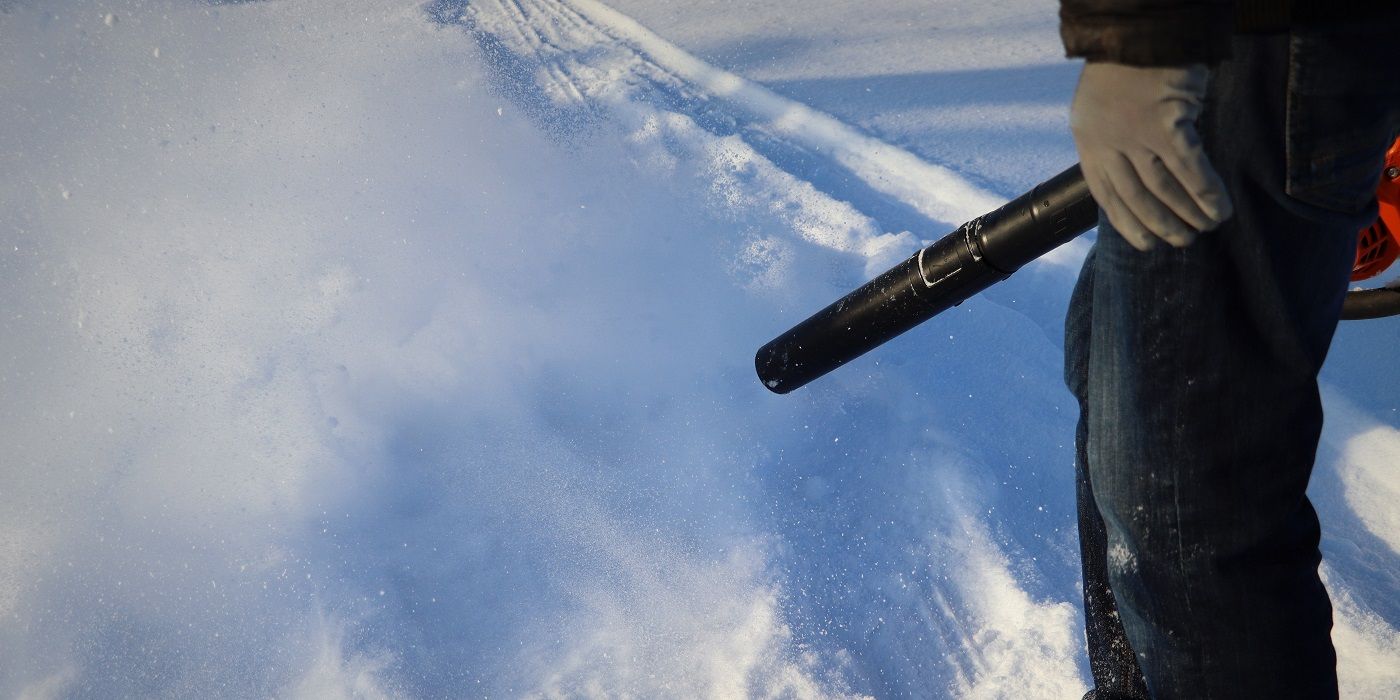Once winter hits, you may find yourself getting creative to keep snow cleared from your property. You may be surprised to find that you have more snow removal power than you thought. If shoveling seems like a tedious and physically taxing chore, you may want to turn to your trusted leaf blower, depending on the type and amount of snowfall you have received.
Many people haven’t considered that the differences between a snow blower and a leaf blower are actually what makes them both effective in snow management. If you’re not sure what a snow blower vs leaf blower can do for you, it's time to find out how each one of these tools can help you defeat the worst of winter.
Difference Between Snow Blowers and Leaf Blowers in Snow
Finding the right tool for the job of managing winter weather
All lawn and garden tools are designed for specific tasks and, most of the time, they work very well for the specific tasks they were designed to do. But sometimes, some tools work great at one task and perform just as well at another. Both gas and eletric leaf blowers are effective at getting rid of snow, but are they as effective as the tools that are designed to remove snow?
|
Model |
Comparison |
Pros |
Cons |
|
Snow Blower |
|
|
|
|
Leaf Blower |
|
|
|
Snow Blowers: Moving Snow All Season Long
Push snow out of your way with the tool made for the job
Snow blowers and throwers are efficient machines that can move seriously massive amounts of snow fairly quickly. Electric and gas-powered models are both available to help get small to moderate jobs done as well. Often, these machines are well-loved due to their ability to reduce physical exertion and cut your snow-clearing time in half, if not more.
Areas that receive regular, consistent snowfall that is variable in weight and texture will definitely benefit from a snowblower. If you have larger areas to clear, this can be especially useful. But if light snowfall is all you regularly receive, then you may want to reconsider such a large investment.
How Do Snow Blowers Work?
Electric snow blowers and single-stage, gas-powered snow blowers all work following the same premise: they run power to an auger that sucks up and throws snow away from your path through a chute. Gas-powered blowers also come in more powerful, dual-stage models that have both an auger and impeller to help move large amounts of snow and throw it farther. Electric and single-stage gas models typically can clear 12- to 21-inch widths and up to 12 inches of clearance. They are for areas that receive small to moderate amounts of snow.
Dual-stage gas models can occasionally clear up to 48 inches in width and up to 24 inches in height. These machines are often used in areas that have extreme weather conditions or are used professionally for business.
The Benefits of Using a Snow Blower
The benefits of having a snow blower are varied, depending on the type of model you choose. Finding the perfect size, weight, and ability for your needs is generally easy enough to research. Many blowers are built for specific areas of clearance.
- Electric starts, heated hand grips, power steering, and adjustable chutes are among the available features you can choose from.
- Snow blowers are powerful tools to aid in clearing large amounts of snow quickly from driveways, walkways, patios, decks, and even stairs.
- Most blowers handle winter conditions well, and even when faced with wet, heavy snow, or ice, they will most likely be able to get the job done.
Snow Blower Maintenance Tips
Snow blowers do need to be maintained, no matter which kind you choose. Proper storage, keeping associated cords untangled, and checking gas and oil are all part of the regular maintenance tasks you will need to consider. Over time, four-stroke gas-powered versions will need to be stored correctly for the warmer months. Gas and oil will need to be drained for proper storage. Belts, hoses, spark plugs, and carburetors are all parts that may need cleaning or replacement, so they should all be checked before storage and when being removed from storage.
What's Not to Like About Snow Blowers?
As with any machine, there are always some concerns that should be considered. Check fluid levels and give your blower a visual inspection before use.
- Consider storage space when you're thinking about buying a snow blower. You can only really use this tool during the winter, as it truly has no other purpose than to move snow. You will keep it in storage for most of the year, so think about this.
- Both gas and electric snow blowers can be quite loud as well, and if you know you need to clear snow at night, it may be a nuisance depending on where you live.
- You may be restricted by the cord length within the area you need to clear if you have an electric model.
Leaf Blowers: Year Round Convenience?
A low-key all-season yard maintenance tool?
Leaf blowers are just that, a handheld device powered by a two-stroke engine, lithium battery, or even an electrical plug to help clear out loose leaves, grass, and other garden debris through forced air. They are also helpful in pushing trash for easier cleanup. Used in spring and fall to help move out falling leaves, or material left behind after a snow melt, gas and electric leaf blowers can also be very useful in the summer to help keep yards and walkways clear.
But if you were told they are also an extremely useful tool through the winter as well, would you believe it? You should!
How Do Leaf Blowers Work?
All blowers use the physics of centrifugal force to create air as a fan spins within the housing. The air is then pushed outwards through the tube, which you can then use to direct the volume and rate of pressure. Powered by an engine, you can either choose from a powerful two-stroke engine, a quieter but relatively powerful electric engine, or a less powerful battery-powered model. The heavier the material, the more powerful an engine you will want to use. When moving snow, you’ll probably want something more powerful, most likely in the gas or electric range of models.
Remember you are going to be limited in what kinds of snow you can use with your leaf blower, so the best remoel tool for snow might not always be the most powerful and expensive model.
Why Use a Leaf Blower in Snow?
The benefits of using a leaf blower to clear snow are pretty self-explanatory. First off, you may be restricted to using your blower only with drier and lighter snowfalls, but you can definitely justify the use of it through the winter if only because you can effectively clear out areas of snow that might usually be inaccessible to a blower, or even a shovel. Plus, electric leaf blowers are generally extremely lightweight, meaning even those who have physical restrictions may be able to keep their porch and associated walkways and stairs clear and free from snow that can melt, refreeze, and cause hazardous conditions.
Leaf blowers can be used year-round. And best of all, it’s fun! Who doesn’t want to play with forced air?
Performing Maintenance on Blowers
Like gas-powered and electric snow blowers, you will need to store your blower when not in use. If present, you'll also need to keep cords tangle-free. Two-stroke engines also require maintenance, including an oil and fuel blend to lubricate the engine and run correctly. Spark plugs, fuel lines, and air filters should all be regularly maintained as well.
Leaf blowers are not easy to hang on walls, so you may need to find another storage solution.
How to Use a Leaf Blower in Snow
Unfortunately, a leaf blower in snow isn’t going to take down any serious winter squalls. In fact, it isn’t going to do much for snow over 4 inches in depth or wet snow. These blowers do not work well in temperatures over 32 degrees, as the snow will begin to melt and become too heavy. Plus, as you push snow it will pile up on itself, so clearing large areas isn’t too realistic either. However, leaf blowers work well for smaller areas, such as porches, patios, stairways, even driveways and walkways, if the snow is light enough and dry enough.
Choosing the Right Winter Tools
Which piece of equipment is going to work best for you?
Obviously, leaf blowers have the most limitations in how they can be used, but they can be extremely helpful in areas that don’t have much snowfall, or in areas that experience periods of regular, dry, light snowfall. They are excellent choices for use in smaller areas and they are especially useful for those who struggle with using a shovel or lifting.
Snow blowers are best for anyone looking to cut down their snow clearance time, and to aid in lessening the physical exertion it takes to remove snow. Designed for areas that receive regular snowfall, both light to heavy, there are many models available to meet specific needs. The bottom line is that there is no need to invest in a snow blower if you cannot justify its use, but it is the machine of choice if you need to move lots of regular snowfall. Whereas a leaf blower can be a handy tool, it isn’t going to ever replace the power of a snowblower, and it cannot clear much more than minimal snowfall through a winter season.
Choose the right tool for the job and it will be much easier to get the job done of removing winter snow efficiently and effectively.

